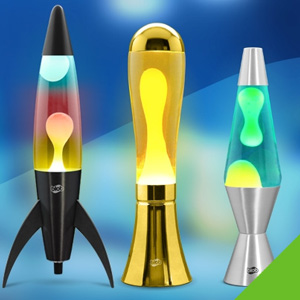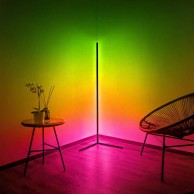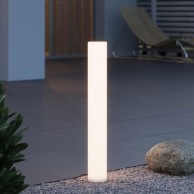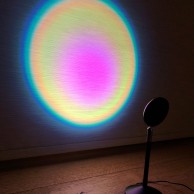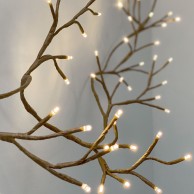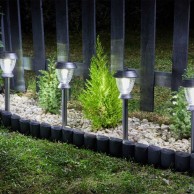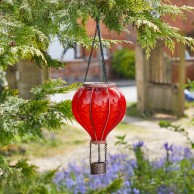History of the Lava Lamp
The Lava Lamp was invented in the 1960s when The Flower Children were experimenting and becoming quite good with artificial mind-altering substances and needed something other than each other to look at while uttering in euphorical trances such thought-provoking, deeply philosophical revelations such as:
'Wow, man!'
'Oh cool!'
'Check this out, man.'
'Heeeey... Diiid yooou seee thaaat, maaan?'
'Far out, man.'
Though there are cheaper imitations, but a good lava lamp is composed of a metal base which houses a standard socket for a low-wattage1 regular home-variety lightbulb and if you're lucky, the bulb itself, a tallish glass 'globe' with a rounded bottom and a somewhat pointy top2, and a cap which slides over the pointy top end.
The globe contains about an inch to three inches of paraffin or some other waxy substance at the bottom, then is filled with water or oil to a level either just under or just above where the cap will cover the empty space3. The wax, water or both contain colouring and these colour combinations themselves can be mind-boggling and mind-numbing. Consider:
- Bits of florescent purple wax floating about in hot pink fluid.
- Bits of bright blue wax floating about in florescent green fluid.
- Bits of sun yellow wax floating about in turquoise fluid.
- When the lamp is cool, these elements are naturally separate, with the paraffin a solid mass at the bottom.
The fun begins when the base is plugged in to an ordinary outlet and the switch, if it has one, is flipped on. The bulb produces just enough heat to soften the paraffin, but not quite enough to melt it. Not all the paraffin is softened at once, mind you, because the paraffin, when heated, becomes lighter than the liquid it is floating in and floats slowly to the top in smallish, ever-changing wiggly bubble-like masses.
As it rises to the top, far away from the bulb, it cools, and descends slowly back to the bottom to be reheated and the cycle begins again. Because there is always some paraffin at the bottom being heated, and always some various sized bubbles floating up while others are floating down, there is constant motion. This is said to have a strangely enchanting, soothing, almost mesmerizing effect on humans and cats.
As was stated before there are other, sometimes cheaper, varieties. Some are formed together in one piece, which means when the bulb burns out, the lamp either becomes a paperweight or trash.
History of the Lava Lamp
Edward Craven-Walker 1918-2000
Born in Singapore, Craven-Walker flew Mosquito aircraft on reconnaissance missions for the Royal Air Force during World War II. Craven-Walker got the idea for the original lamp design after walking into a pub in Hampshire, England and noticing a rather odd item sitting on the counter behind the bar. It was a glass cocktail shaker that contained some kind of mucus-like blob floating in liquid. Upon inquiry, the bartender told him it was an egg-timer. The 'blob' was actually a clump of solid wax in clear liquid. The bartender explained...
You put the shaker in the boiling water with your egg, and as the boiling water cooks the egg it also melts the wax turning it into an amorphous blob of goo. When the wax then floated to the top of the jar, your egg was done. Craven-Walker saw a money-making opportunity in front of him - turn the egg-timer into a lamp with thicker oil that would form sculptural shapes and sell it to the public. He set about tracking down the inventor of the original design. The inventor, known only by his last name of Dunnet, was deceased, allowing for Craven-Walker to patent the invention for himself.
Craven-Walker spent the next 15 years perfecting Dunnet's invention so that it could be mass-produced. In the meantime, he supported himself by making 'art-house' films about his other passion: nudity2. Travelling Light, one of these so-called 'art-house' films, was the first naturalist film to receive public release in the UK. Described as an underwater ballet, this film was shot off Corsica and was released in 1960.
The Astro Lamp was launched in 1963, just ahead of the craze for all things psychedelic. Craven-Walker's company who invented the lava lamp was called Crestworth. Craven-Walker later sold his rights to his creations
Coming to America - the Lava Brand Motion Lamp
In 1965, Craven-Walker introduced his Astro Lamp at a novelty convention in Hamburg, West Germany. Two Americans named Adolph Wertheimer and Hy Spector, in awe with the lamp's beauty, asked to purchase the American rights to the lamp. The Astro Lamp was then brought to North America and renamed Lava Brand Motion Lamps and production took off in Chicago, Illinois. Lava Brand Motion Lamp sales peaked in the late '60s when slow-swirling coloured wax happened to coincide perfectly with the undulating aesthetics of psychedelia. They were advertised as 'head trips that offered a motion for every emotion'4.
At their peak, more than seven million Lava Lamps were sold around the world each year, but by the early 1970s the fad had run its course and sales fell dramatically. By 1976, sales were down to 200 lamps per week, a mere fraction of what they had been a few years before. By the late 1980s, however, sales began to rebound. As style makes began to ransack the sixties for inspiration, Lava Lamps came back. Formerly dollar-a-piece flea-market finds, original 1960s Lava Lamps (especially those with paisley, pop art or homemade trippy motifs on their bases) became real collectibles in the late 1980s, selling in chic boutiques for more than a brand new one. And speaking of new ones, they weren't hurting for business either. By 1998 manufacturers in England and the United States were selling more than two million of the lamps per year.
A Patented Formula
Although the Lava Lamp was invented in 1963 by Edward Craven-Walker, and patented by his company in 1964, the US Patent dates to 16 March, 1971. There are conflicting records at the US Patent Office that also state that the Lava Lamp was submitted for patent by David George Smith on behalf of Craven-Walker's Crestworth Company in 1968 under the heading 'display devices'. Whichever the case, only the companies that make Lava Lamps know precisely what chemicals are in the lamp and in what combination, making the recipe a trade secret. There are, however, many websites and books offering 'poor man's' versions of the Lava Lamp that you can make at home. It is not recommended attempting any of these formulas, simply because many of the ingredients suggested are flammable and can cause personal injury.
EXTRACT QUOTED FROM THE BBC http://www.bbc.co.uk/dna/h2g2/A641224
What's New?
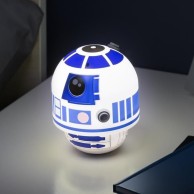 R2D2 Sway Night Light by Star Wars - Battery Operated
R2D2 Sway Night Light by Star Wars - Battery Operated
 Baby Yoda Mandalorian Child Battery Operated Lamp
Baby Yoda Mandalorian Child Battery Operated Lamp
 X Wing Posable USB Desk Light - Star Wars
X Wing Posable USB Desk Light - Star Wars
 Minecraft Pig Light with Sound - Battery Operated
Minecraft Pig Light with Sound - Battery Operated
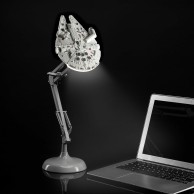 Millennium Falcon Posable Desk Light - Star Wars
Millennium Falcon Posable Desk Light - Star Wars
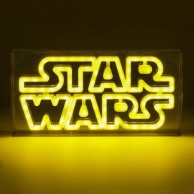 Star Wars Logo LED Neon Light - USB Powered
Star Wars Logo LED Neon Light - USB Powered

